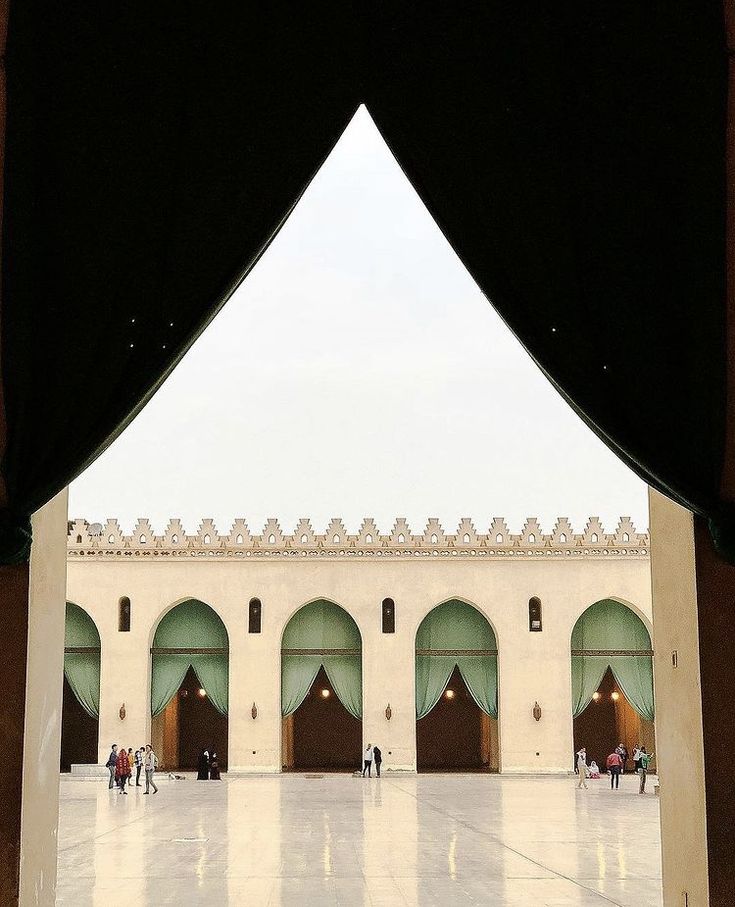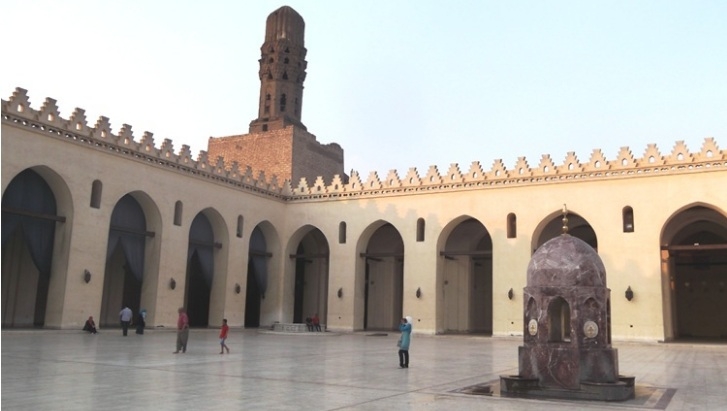Introduction: A Timeless Jewel of Islamic Cairo
Tucked away in the heart of historic Cairo, amidst the buzzing life of Al Muizz Street and the monumental walls of Fatimid architecture, lies one of the city’s most significant and awe-inspiring religious landmarks: Al Hakim Mosque Cairo. With its towering minarets and serene courtyard, this mosque is not just a place of worship—it’s a living testament to Cairo’s rich Islamic heritage.
For travelers who want to go beyond the pyramids and dive into the spiritual and architectural legacy of Egypt, Al Hakim Mosque offers a uniquely peaceful and photogenic experience. Whether you're a history lover, architecture enthusiast, or a casual explorer wandering through Old Cairo, this mosque is a must-see.

The History Behind Al Hakim Mosque Cairo
Al Hakim Mosque Cairo is one of the oldest and largest mosques in the city. Construction began in 990 AD during the reign of Caliph Al-Aziz Billah and was completed by his son, Caliph Al-Hakim bi-Amr Allah in 1013 AD. The mosque is named after Al-Hakim, the sixth Fatimid caliph, a mysterious and controversial figure whose life continues to intrigue historians to this day.
Over the centuries, the mosque saw periods of glory, decline, and restoration. It served different purposes, including being used as a prison, a military warehouse, and even a school. After significant restorations, especially those led by the Dawoodi Bohra community in the 1980s, the mosque has been revived and reopened to the public as a center of Islamic culture and architecture.
Architectural Highlights of Al Hakim Mosque
Al Hakim Mosque Cairo is celebrated for its unique and powerful blend of Fatimid, Abbasid, and even early Gothic architectural styles. Some of its most striking features include:
-
The Twin Minarets: Among the oldest in Cairo, the minarets are enclosed in stone towers and capped with small domes—a rare feature in Fatimid architecture.
-
Massive Courtyard: The open-air courtyard surrounded by arcades offers a peaceful space for reflection and photography. It’s particularly stunning at sunset.
-
Intricate Stucco Work: The interior walls and arches display original and restored stucco inscriptions, showcasing verses from the Quran and floral patterns.
-
Simplicity in Grandeur: Unlike later mosques adorned with gold and tile mosaics, Al Hakim Mosque impresses with its massive scale, symmetry, and understated elegance.
Why You Should Visit Al Hakim Mosque Cairo
Still wondering if this mosque should be on your itinerary? Here’s what makes it worth your time:
-
???? Oldest Still-Standing Fatimid Mosque: You’re walking through a structure that has stood for over 1,000 years.
-
???? Photographer’s Dream: With its expansive courtyard, symmetrical arches, and early morning light, it’s ideal for photography lovers.
-
???? Peaceful Ambience: Despite its central location, the mosque maintains a calm and spiritual atmosphere, perfect for a quiet escape.
-
???? Architectural Learning: If you’re into Islamic art and architecture, this mosque is a living classroom of early Islamic design.
-
???? Proximity to Al Muizz Street: It’s a perfect starting or ending point for a walking tour of Islamic Cairo’s historic core.
Best Time to Visit
The best time to explore Al Hakim Mosque Cairo is during the cooler months, from October to April. Early morning or late afternoon is ideal, offering soft lighting for photography and cooler temperatures for walking.
Avoid peak Friday prayer times if you want to explore quietly, but do check the schedule if you’re interested in experiencing local worship.
Suggested Itinerary: A Day in Historic Islamic Cairo
Morning
-
Begin at Al Hakim Mosque Cairo. Enjoy the tranquility before the crowds arrive.
-
Take a slow walk down Al Muizz Street, which is lined with other historic mosques, sabils (fountains), and medieval houses.
Midday
-
Visit the nearby Khan El Khalili Bazaar for lunch and a traditional Egyptian coffee or mint tea.
Afternoon
-
Explore Al Azhar Mosque or Al Aqmar Mosque, both showcasing unique architectural details from different periods.
-
End your day at Al Azhar Park, offering breathtaking views of Cairo’s skyline and the Citadel.
Nearby Attractions
Al Hakim Mosque is located in the heart of Historic Cairo, making it easy to combine with:
-
Bab El Futuh and Bab El Nasr: The old city gates dating back to the Fatimid period.
-
Bayt Al Suhaymi: A beautiful example of Ottoman residential architecture.
-
Sultan Al-Muayyad Mosque: With its massive dome and proximity to Bab Zuweila.
-
Al Ghuri Complex: A striking structure known for its whirling dervish performances.
Travel Tips for Visiting Al Hakim Mosque Cairo
-
Respect Dress Codes: Modest clothing is appreciated. Women may be asked to wear a scarf.
-
Photography Etiquette: Photos are allowed, but avoid taking photos during prayer.
-
Footwear: You’ll need to remove your shoes before entering, so bring socks or a plastic bag.
-
Bring Cash: Donations are welcome for upkeep; entry is generally free.
-
Combine with a Guided Tour: To better understand its history and symbolism.
Al Hakim and the Mystery of the Fatimids
Caliph Al-Hakim himself adds an air of mystery to the mosque. He was known for his eccentric and often erratic policies—banning certain foods one day and reversing the law the next. He disappeared under mysterious circumstances in 1021 AD, and some even believe he was deified by a group of his followers, contributing to the birth of the Druze faith.
The mosque named after him stands in stark contrast to his reputation—calm, composed, symmetrical, and eternal.
Conclusion: Discover the Soul of Cairo in Stone and Spirit
Al Hakim Mosque Cairo is more than just a place of worship—it’s a historical chapter etched in stone, echoing with stories from Cairo’s golden age. It’s a monument that has survived war, neglect, and transformation, and still welcomes the curious and the faithful alike.
When in Cairo, don’t just check off the big-ticket attractions—step into a space that connects you to over a millennium of spiritual, political, and artistic legacy. Al Hakim Mosque Cairo offers that rare chance to experience authenticity, peace, and the true depth of Egypt’s Islamic past.

